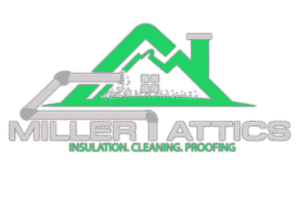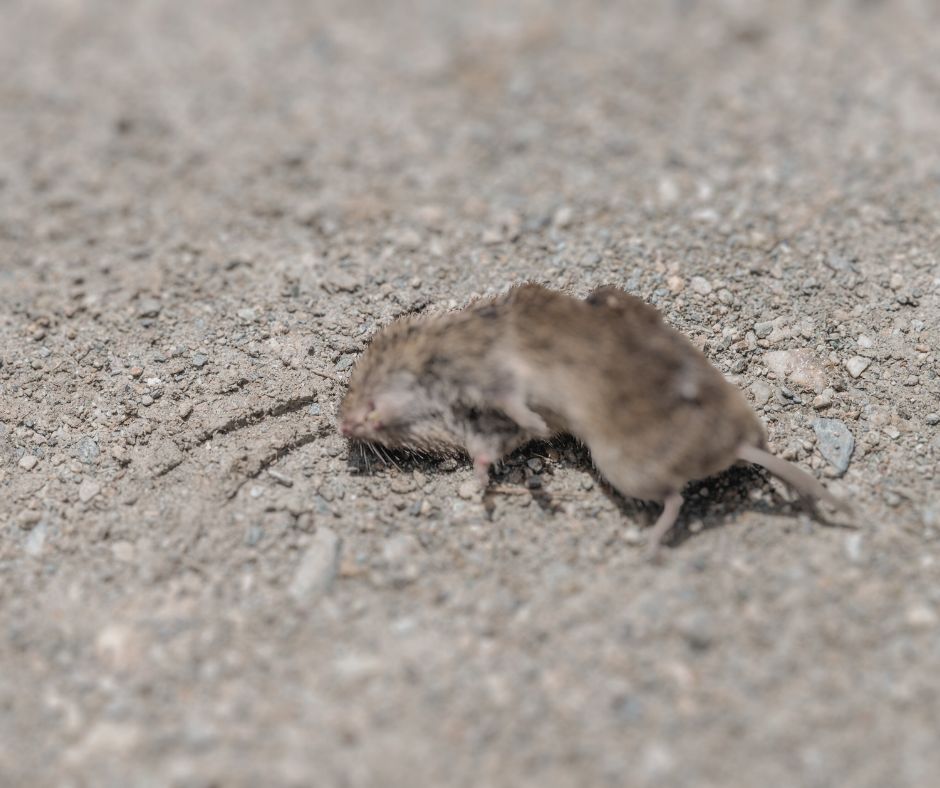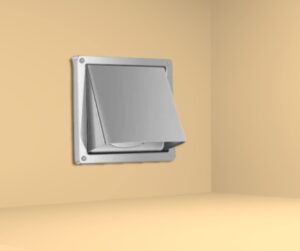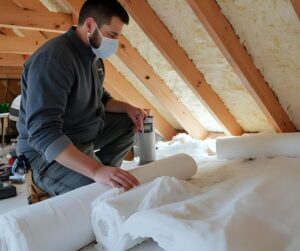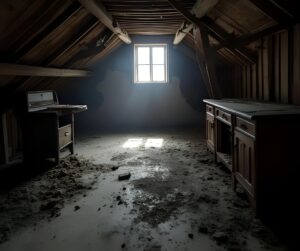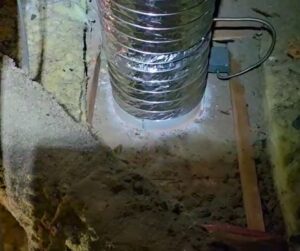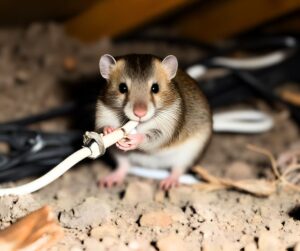By the Miller Attics Team – With over two decades of experience in home improvement and property maintenance, we’ve encountered virtually every dead animal removal scenario imaginable. From small rodents in wall cavities to larger animals in crawl spaces, we’ve helped thousands of homeowners navigate these challenging situations safely and effectively.
Discovering a dead animal on your property is never pleasant, but it’s a reality many homeowners face. Whether it’s a mouse that died in your walls, a raccoon in your attic, or a larger animal in your yard, knowing when and how to handle it can save you time, money, and potential health risks. As someone who has been in the home improvement business for over 20 years, I’ve seen firsthand the consequences of both proper and improper removal approaches.
The smell of decomposing animals can permeate your entire home, create health hazards, and attract other pests. More importantly, attempting dead animal removal without proper knowledge and equipment can expose you and your family to serious health risks. This comprehensive guide will help you understand when to tackle the job yourself and when to call professional services.
Understanding the Urgency: Why Immediate Dead Animal Removal Matters
Time is critical when dealing with dead animals. In my experience with Miller Attics, I’ve learned that the decomposition process begins immediately after death, and the longer you wait, the more complex and expensive the removal becomes. Dead animals create multiple problems that compound over time.
The odor from decomposing animals can become unbearable within 24-48 hours, especially in warm weather. I remember one client who waited a week before calling us about a dead raccoon in their attic. The smell had permeated their entire second floor, requiring professional odor remediation that cost three times more than immediate dead animal removal would have.
Beyond the smell, dead animals attract flies, maggots, beetles, and other pests. These secondary infestations can spread throughout your home and create additional health concerns. Professional removal services understand these time-sensitive factors and can respond quickly to minimize damage.
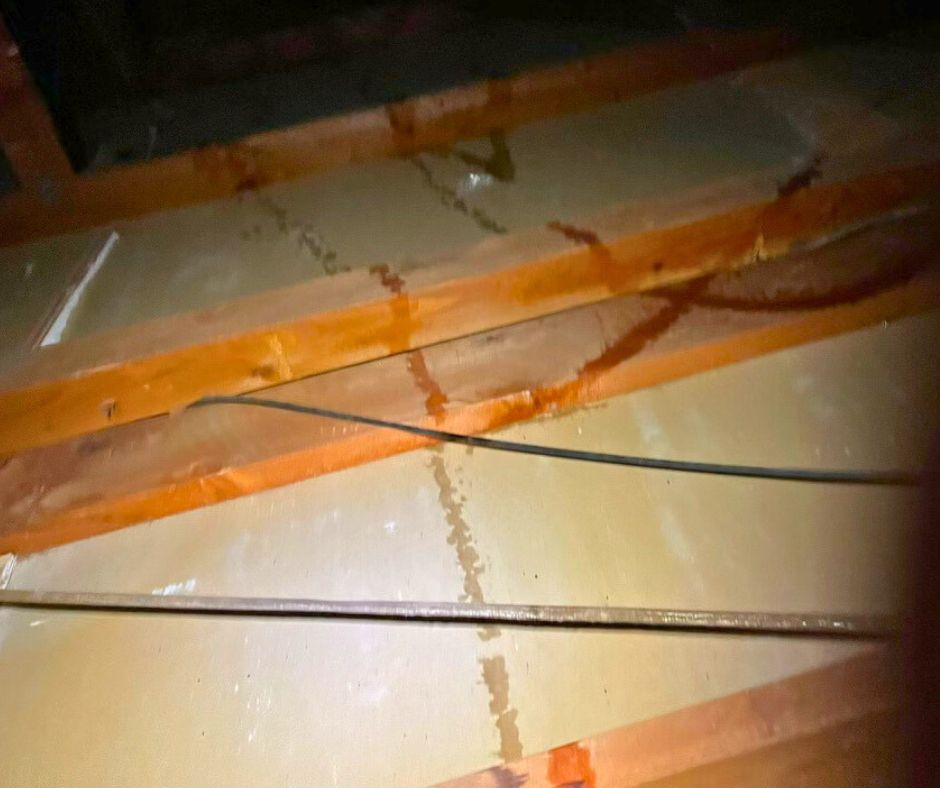
DIY vs Professional Dead Animal Removal: Making the Right Choice
When You Might Handle It Yourself
There are limited situations where homeowners can safely perform it without professional help. If you discover a recently deceased small animal like a mouse or small bird in an easily accessible location, you might consider handling it yourself with proper precautions.
Essential safety equipment for DIY dead animal removal includes:
- N95 or P100 respirator masks
- Heavy-duty rubber gloves
- Eye protection
- Disposable coveralls
- Heavy-duty garbage bags
- Disinfectant solution
However, even with proper equipment, I generally recommend against DIY for several reasons that I’ll explain in the next section.
When to Call Professional Dead Animal Removal Services
Professional removal becomes essential in numerous scenarios. Any dead animal larger than a mouse should be handled by professionals. Animals like raccoons, opossums, cats, or larger creatures require specialized handling due to disease risks and disposal regulations.
Location also determines whether you need professional removal. If the animal died in your walls, under your house, in tight crawl spaces, or in your HVAC system, professional expertise is crucial. During my years with Miller Attics, I’ve extracted dead animals from impossible-seeming locations using specialized tools and techniques that homeowners simply don’t have access to.
Animals that may have died from disease present another clear case for professional dead animal removal. Rabies, distemper, and other diseases can remain viable in dead tissue for extended periods. Professional services have the training and equipment to handle potentially infectious materials safely.
Health Risks Associated with Dead Animals
The health risks associated with dead animals extend far beyond unpleasant odors. This is why this services invest heavily in safety equipment and training. Decomposing animals can harbor numerous pathogens, including bacteria, viruses, and parasites.
Airborne pathogens represent one of the most serious concerns. As animals decompose, they release gases and particles that can carry disease-causing organisms. Without proper respiratory protection, you risk inhaling these contaminants. Professional teams use industrial-grade air filtration and protective equipment to minimize these risks.
Direct contact with dead animals or contaminated surfaces can transmit diseases through skin contact or accidental ingestion. Parasites like fleas, ticks, and mites may remain active on dead animals for days or weeks. Professional animal removal services understand these risks and follow strict protocols to prevent exposure.
Secondary Contamination Issues
Dead animals don’t just contaminate themselves; they contaminate everything around them. Bodily fluids can seep into insulation, wooden structures, and other porous materials. These contaminated materials often require complete replacement, not just cleaning.
I’ve seen cases where delayed dead animal removal resulted in thousands of dollars in structural damage. One client had a dead possum in their wall cavity that they ignored for two weeks. By the time we performed the removal, we had to replace insulation, drywall, and even some framing lumber due to contamination and structural damage from decomposition fluids.
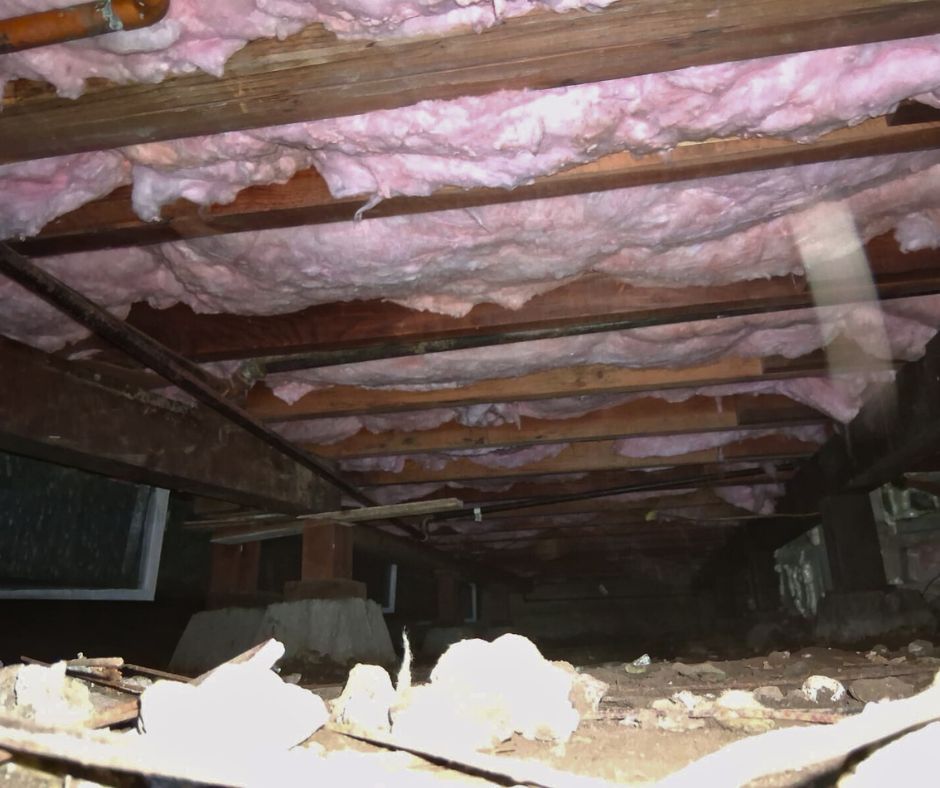
Cost Factors
Understanding dead animal removal costs helps homeowners budget appropriately and make informed decisions. Several factors influence the total cost of professional services.
Location accessibility significantly impacts pricing. Animals in easily accessible areas like basements or garages typically cost $150-$300 to remove. However, animals in wall cavities, under concrete slabs, or in complex HVAC systems can cost $400-$800 or more due to the additional labor and potential structural work required.
Animal size also affects costs. Small animals like mice or small birds fall into the lower price range, while larger animals like raccoons, cats, or opossums require more extensive safety precautions and disposal procedures, increasing costs accordingly.
Additional Services and Their Costs
Complete dead animal removal often involves more than just removing the carcass. Odor remediation typically adds $200-$500 to the total cost, depending on how extensively the smell has penetrated your home’s materials.
Sanitization and disinfection services, which I strongly recommend after any removal, typically cost an additional $150-$400. This includes treating all contaminated surfaces with professional-grade disinfectants and may involve replacing contaminated insulation or other materials.
Entry point sealing to prevent future animal intrusions often accompanies services. This preventive measure typically costs $100-$300 but can save thousands in future damage and removal costs.
Choosing the Right Service
Selecting a qualified service requires careful consideration of several factors. Not all pest control companies offer comprehensive services, and not all that claim to offer these services have the proper training and equipment.
Proper licensing and insurance represent the foundation of any reputable dead animal removal service. Companies should carry liability insurance and follow local regulations for handling and disposing of dead animals. Always verify these credentials before hiring any dead animal removal service.
Experience with your specific situation matters significantly. A company that primarily handles live animal removal may not have the specialized equipment and expertise needed for safe removal. Ask potential providers about their specific experience with dead animal situations similar to yours.
Red Flags to Avoid
Several warning signs indicate you should avoid certain dead animal services. Companies that provide quotes over the phone without inspecting the situation often underestimate the scope of work, leading to surprise charges later.
Avoid services that don’t discuss safety procedures or seem unprepared for health risks. Legitimate professionals will explain their safety protocols and show you their protective equipment before beginning work.
Extremely low prices often indicate corners will be cut in safety, disposal, or thoroughness. Quality service requires specialized equipment, proper disposal methods, and thorough sanitization. Services that significantly undercut market rates often compromise on these essential elements.
The Professional Process
Understanding what professional dead animal removal involves helps homeowners set appropriate expectations and evaluate service quality. The process typically begins with a thorough inspection to locate the dead animal and assess contamination extent.
Professional teams use specialized detection equipment, including moisture meters and thermal imaging cameras, to pinpoint exact locations without unnecessary destruction. This technology-based approach minimizes property damage while ensuring complete removal.
The actual removal process involves extensive safety precautions. technicians wear full protective equipment, including respirators, protective suits, and eye protection. They also establish containment areas to prevent contamination spread during removal.
Post-Removal Procedures
Complete dead animal removal extends well beyond simply removing the carcass. Professional services thoroughly sanitize all contaminated areas using hospital-grade disinfectants specifically designed for biological contamination.
Odor treatment represents another crucial component. This may involve ozone treatment, enzymatic cleaners, or other specialized odor elimination techniques. Simply masking odors with air fresheners is never sufficient for proper dead animal removal.
Property restoration often concludes the removal process. This might include replacing contaminated insulation, sealing entry points, or repairing damage caused during removal. Professional services coordinate these restoration activities to return your property to its pre-incident condition.
Prevention: Avoiding Future Dead Animal Problems
While professional dead animal removal services can handle any situation that arises, prevention remains the most cost-effective approach. Regular property inspections can identify potential animal entry points before they become problems.
Sealing gaps around your home’s foundation, roofline, and utility penetrations prevents many animals from entering your property. During my years with Miller Attics, I’ve found that most dead animal situations could have been prevented with proper exclusion measures costing a fraction of removal expenses.
Maintaining your property also reduces attractions for animals. Removing food sources, securing garbage containers, and eliminating water sources make your property less appealing to potentially problematic wildlife.
Seasonal Considerations
Seasonal factors significantly impact both the likelihood of needing services and the urgency of response. Cold weather drives animals to seek shelter in warm spaces like attics, basements, and wall cavities. Unfortunately, these same animals may die during harsh weather conditions, creating removal needs.
Summer heat accelerates decomposition, making immediate animal removal even more critical. I’ve responded to emergency calls where homeowners couldn’t remain in their homes due to overwhelming odors that developed in just one day of hot weather.
Spring often brings increased dead animal removal calls as animals weakened by winter conditions succumb to stress, disease, or injury. Planning ahead during these peak seasons can help you respond quickly if it becomes necessary.
Conclusion: Making Informed Decisions
Dealing with dead animals on your property is never pleasant, but making informed decisions about it can minimize health risks, property damage, and costs. While small, recently deceased animals in accessible locations might be handled by homeowners with proper precautions, most situations require professional dead animal removal services.
The health risks associated with dead animals are serious and often underestimated. Professional removal services have the training, equipment, and experience to handle these situations safely and completely. The cost of professional services is almost always less than the potential costs of improper handling, including health care expenses, property damage, and additional pest problems.
When selecting a removal service, prioritize experience, proper licensing, and comprehensive service offerings over low prices. Quality dead animal removal requires specialized skills and equipment that legitimate professionals invest in maintaining.
Remember that prevention remains your best strategy for avoiding this needs. Regular property maintenance and professional wildlife exclusion services can prevent most situations that lead to dead animals on your property.
At Miller Attics, we’ve built our reputation on providing safe, thorough, and professional dead animal removal services. If you’re facing a dead animal situation, don’t risk your health or property trying to handle it yourself. Contact experienced professionals who can resolve the problem safely and completely, giving you peace of mind and protecting your family’s health.
